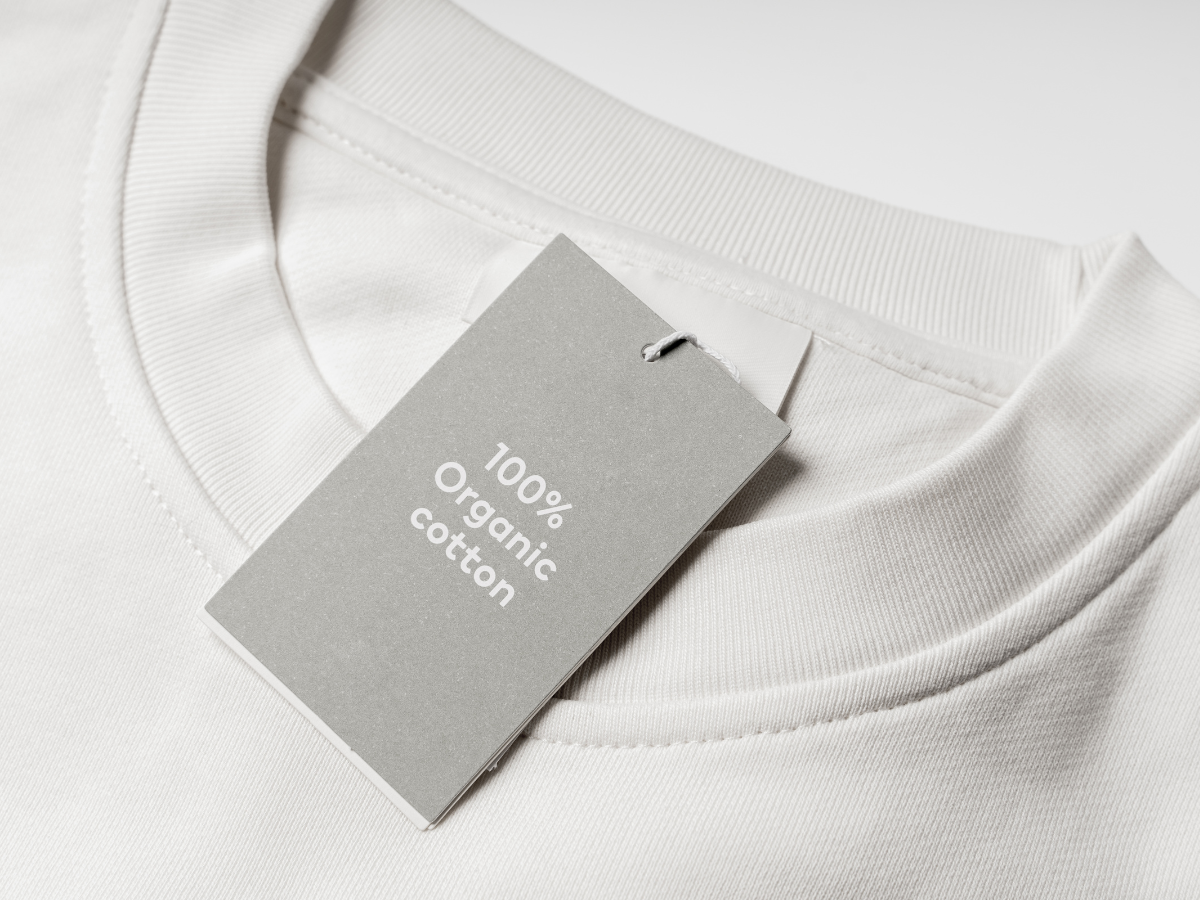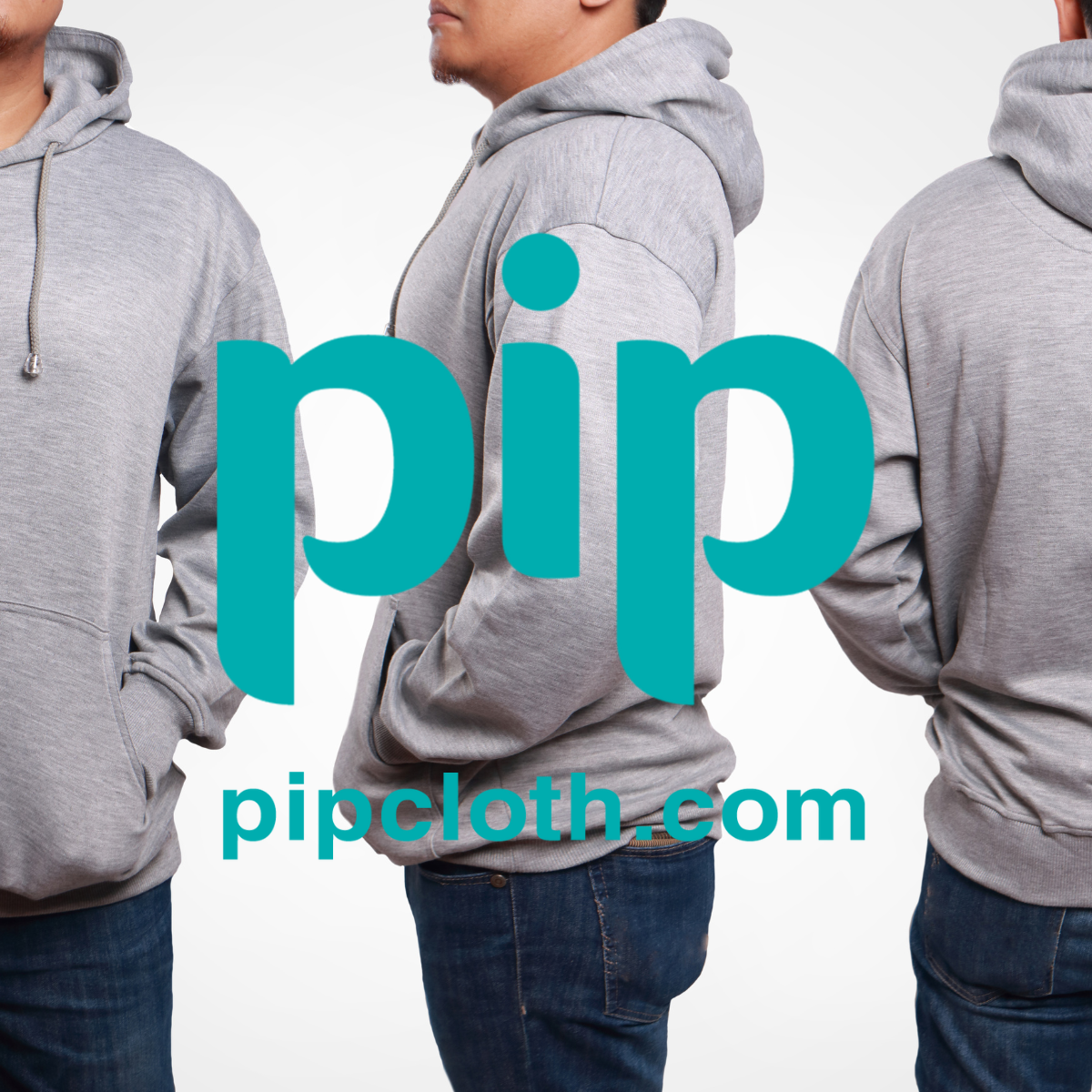Embracing Sustainability: A Guide to Eco-Friendly Hoodie Choices
The Importance of Sustainable Fashion:
In recent years, sustainable fashion has gained significant attention as consumers become more aware of the environmental impact of their clothing choices. The fashion industry is one of the largest polluters globally, contributing to waste, carbon emissions, and water pollution. By embracing sustainable fashion practices, such as choosing eco-friendly hoodies, consumers can make a positive impact on the environment.
Understanding Eco-Friendly Materials:
When selecting an eco-friendly hoodie, it’s essential to consider the materials used in its production. Organic cotton, recycled polyester, and bamboo are among the most sustainable options available. These materials are grown and produced using methods that minimize environmental harm, such as reducing water usage, avoiding harmful chemicals, and utilizing renewable resources.
Benefits of Choosing Eco-Friendly Hoodies:
Opting for eco-friendly hoodies offers numerous benefits beyond environmental sustainability. These garments are often of higher quality, as they are made with more durable and long-lasting materials. Additionally, eco-friendly hoodies are gentle on the skin, as they are free from harmful chemicals and irritants. By investing in sustainable clothing, consumers can enjoy a guilt-free and comfortable wearing experience.
Supporting Ethical and Sustainable Brands:
When shopping for eco-friendly hoodies, it’s crucial to support brands that prioritize sustainability and ethical practices throughout their supply chain. Look for companies that are transparent about their production processes, use eco-friendly materials, and ensure fair labor practices. By supporting these brands, consumers can contribute to a more sustainable and socially responsible fashion industry.
Making a Positive Impact with Your Hoodie Choice:
Choosing an eco-friendly hoodie may seem like a small decision, but it can have a significant impact on the environment. By opting for sustainable materials and supporting ethical brands, consumers can reduce their carbon footprint, minimize waste, and contribute to a more sustainable future. Every eco-friendly hoodie purchase is a step towards a greener and more responsible fashion industry.
Introduction
In an era where environmental consciousness is on the rise, making sustainable fashion choices has become a priority for many consumers. As a staple in most wardrobes, hoodies have seen a significant shift towards eco-friendly options in recent years. According to a 2020 McKinsey report, 67% of consumers consider the use of sustainable materials to be an important factor when purchasing clothing. This article delves into the world of eco-friendly hoodies, examining the environmental impact of conventional hoodie production, exploring sustainable materials and certifications, and highlighting ethical brands leading the way in sustainable hoodie fashion. By the end, readers will be equipped with the knowledge and resources needed to make informed, environmentally conscious hoodie purchases.
The Environmental Impact of Conventional Hoodies
Materials and Production
Conventional hoodies are typically made from resource-intensive materials like cotton and polyester. Cotton, while natural, has a significant environmental footprint. The World Wildlife Fund estimates that producing a single cotton t-shirt requires 2,700 liters of water – enough to sustain one person for 900 days. Additionally, conventional cotton farming accounts for 24% of global insecticide use and 11% of pesticide use, contributing to soil degradation, water pollution, and biodiversity loss.
Polyester, a synthetic fiber derived from petroleum, also poses environmental concerns. The production of polyester requires significant amounts of energy and releases harmful emissions, such as volatile organic compounds (VOCs) and acid gases. A 2017 study by the International Union for Conservation of Nature (IUCN) found that 35% of all microplastics in the ocean come from synthetic textile fibers like polyester.

Supply Chain and Transportation
The globalized nature of the fashion industry often results in lengthy, carbon-intensive supply chains. A 2018 report by Quantis revealed that the apparel and footwear industries account for 8% of global greenhouse gas emissions, with transportation being a significant contributor. Hoodies may travel thousands of miles from raw material sourcing to manufacturing, distribution, and finally, to the consumer. This transportation relies heavily on fossil fuel-powered vehicles, ships, and planes, further exacerbating the carbon footprint of conventional hoodies.
Consumer Behavior and Disposal
The rise of fast fashion has fueled a culture of overconsumption and disposability in the hoodie market. Consumers are encouraged to constantly update their wardrobes with the latest styles, leading to increased textile waste. The Environmental Protection Agency (EPA) estimates that 17 million tons of textile waste ended up in landfills in 2018, with only 2.5 million tons recycled. When hoodies end up in landfills, they can take hundreds of years to decompose, releasing methane – a potent greenhouse gas – in the process.
Exploring Eco-Friendly Hoodie Materials
Organic Cotton
Organic cotton has emerged as a more sustainable alternative to its conventional counterpart. Grown without the use of synthetic pesticides, fertilizers, or genetically modified organisms (GMOs), organic cotton cultivation prioritizes soil health, water conservation, and biodiversity preservation. The Textile Exchange’s 2020 Organic Cotton Market Report found that organic cotton production has increased by 31% since 2016, indicating a growing demand for this eco-friendly material in the hoodie market.
Organic cotton also offers social and economic benefits for farmers. By eliminating exposure to harmful chemicals, organic farming practices contribute to improved health and safety conditions for agricultural workers. Additionally, organic cotton often commands a premium price, providing higher and more stable incomes for farmers.

Recycled Polyester
Recycled polyester, made from post-consumer plastic waste like water bottles, offers a more sustainable option compared to virgin polyester. The process of recycling polyester requires 59% less energy than producing virgin polyester, according to a 2017 study by the Swiss Federal Office for the Environment. Furthermore, using recycled polyester helps divert plastic waste from landfills and oceans. Adidas, for example, has committed to using only recycled polyester in all its products by 2024, demonstrating the growing adoption of this material in the sportswear and hoodie industries.
However, it is essential to acknowledge the limitations of recycled polyester. The recycling process can degrade the quality of the fibers, resulting in a lower-grade material that may not be as durable as virgin polyester. Additionally, recycled polyester still sheds microfibers when washed, contributing to the microplastic pollution problem. Addressing these challenges requires continued innovation in textile recycling technologies and the development of effective microfiber filtration systems.
Other Sustainable Fibers
Several other sustainable fibers are gaining traction in the eco-friendly hoodie market:
- Tencel lyocell: Made from responsibly sourced wood pulp, Tencel lyocell is produced using a closed-loop process that recycles 99% of the solvents used. The resulting fibers are biodegradable, compostable, and require less water and energy to produce compared to conventional cotton.
- Hemp: A fast-growing crop that requires minimal water, pesticides, and herbicides, hemp is a highly sustainable choice for hoodie production. Hemp fibers are naturally antimicrobial, moisture-wicking, and durable, making them well-suited for activewear and loungewear.
- Bamboo: Like hemp, bamboo is a rapidly renewable resource that can be grown without the use of harmful chemicals. Bamboo fibers are soft, breathable, and naturally moisture-wicking, providing both comfort and performance benefits in hoodies. However, it is crucial to ensure that bamboo is processed using eco-friendly methods, as some conventional production processes can negate the material’s sustainable attributes
The Rise of Eco-Friendly Tees: Sustainable Style for the Conscious Consumer
Sustainable Hoodie Certifications and Labels
Global Organic Textile Standard (GOTS)
The Global Organic Textile Standard (GOTS) is the world’s leading certification for organic fibers. To be GOTS-certified, hoodies must contain at least 70% organic fibers, with the remaining 30% meeting strict environmental and social criteria. GOTS also prohibits the use of toxic chemicals, such as azo dyes and formaldehyde, throughout the production process. In 2020, the number of GOTS-certified facilities worldwide increased by 34%, reflecting the growing demand for organic textiles in the fashion industry.
GOTS certification extends beyond environmental standards, encompassing social and labor criteria as well. Certified hoodie manufacturers must adhere to fair wage policies, safe working conditions, and a strict ban on child labor. Regular third-party audits ensure compliance with these standards, providing consumers with assurance that their GOTS-certified hoodies are produced ethically and responsibly.
Bluesign
Bluesign is a comprehensive system for sustainable textile production, focusing on resource efficiency, consumer safety, and environmental protection. The Bluesign standard assesses and optimizes each step of the hoodie manufacturing process, from raw materials to finished products. By adhering to Bluesign criteria, hoodie manufacturers can reduce their water, energy, and chemical consumption by up to 50%.
The Bluesign system maintains a stringent chemical assessment and management process, screening and eliminating over 900 harmful substances from the textile production process. This ensures that Bluesign-approved materials are safe for both consumers and the environment. Additionally, Bluesign promotes transparency and traceability throughout the supply chain, enabling consumers to make informed decisions about the sustainability of their hoodies.
Other Certifications and Labels
Several other certifications and labels are used to verify the sustainability and ethical production of hoodies:
- Oeko-Tex Standard 100: This global testing and certification system ensures that textile products, including hoodies, are free from harmful substances such as chemicals, heavy metals, and pesticides. Oeko-Tex Standard 100 provides consumers with assurance that their hoodies are safe for human health and the environment.
- Fair Trade: Fair Trade certification focuses on ensuring fair wages, safe working conditions, and community development in hoodie production. Fair Trade-certified hoodie brands must adhere to strict social, economic, and environmental standards that prioritize the well-being of workers and their communities.
- B Corporation: B Corporation certification recognizes companies that meet high standards of social and environmental performance, accountability, and transparency. By supporting B Corp-certified hoodie brands, consumers can contribute to a more equitable and sustainable fashion industry.
Ethical and Sustainable Hoodie Brands
Patagonia
Patagonia, a well-known outdoor clothing brand, has long been a leader in sustainable and ethical hoodie production. The company uses a variety of eco-friendly materials, such as organic cotton and recycled polyester, in its hoodie designs. In fact, 87% of Patagonia’s line uses recycled materials, and the brand has recycled over 95 tons of fishing nets into hat brims and jacket trim since 2014.
Patagonia’s commitment to sustainability extends beyond its materials. The company has pledged 1% of its annual sales to grassroots environmental organizations through its 1% for the Planet initiative, totaling over $140 million in donations to date. Patagonia also operates a Worn Wear program, which encourages customers to repair, resell, and recycle their Patagonia hoodies and other garments, promoting a circular economy approach to fashion.
Tentree
Tentree is an eco-friendly clothing brand that plants ten trees for every item purchased, including its range of sustainable hoodies. The brand uses a variety of sustainable materials, such as organic cotton, recycled polyester, and Tencel lyocell, in its hoodie production. Tentree has planted over 50 million trees to date, with a goal of planting 1 billion trees by 2030.
In addition to its tree planting initiative, Tentree prioritizes transparency and traceability in its supply chain. The brand provides detailed information about the origin and manufacturing process of each hoodie, allowing consumers to make informed decisions about their purchases. Tentree also partners with various environmental organizations, such as Eden Reforestation Projects and One Tree Planted, to support reforestation efforts worldwide.
Outerknown
Founded by professional surfer Kelly Slater, Outerknown is a sustainable clothing brand that offers a range of eco-friendly hoodies made from materials like organic cotton, recycled polyester, and Econyl (regenerated nylon from fishing nets and other waste). The brand is committed to transparency, publishing detailed information about its suppliers and manufacturing processes on its website.
Outerknown has also implemented a circular economy strategy through its Outerworn program, which allows customers to send back their worn Outerknown clothing for repair, resale, or recycling. By extending the life of its garments and reducing waste, Outerknown aims to minimize its environmental impact and promote a more sustainable approach to fashion.
Caring for Eco-Friendly Hoodies
Washing and Drying
Proper care is essential for maintaining the quality and longevity of eco-friendly hoodies. When washing, always follow the care label instructions to ensure the best results. Generally, washing hoodies in cold water and on a gentle cycle can help reduce energy consumption and minimize wear and tear on the fibers. Using eco-friendly, biodegradable laundry detergents can further reduce the environmental impact of hoodie care.
Air-drying hoodies is the most energy-efficient and environmentally friendly option. If using a dryer, choose a low heat setting and remove the hoodie promptly to minimize wrinkles and shrinkage. According to the EPA, air-drying clothes can save up to 1,500 pounds of carbon dioxide emissions per household annually.
Stain Removal and Odor Control
When dealing with stains on eco-friendly hoodies, opt for natural, non-toxic solutions whenever possible. For example, a paste made from baking soda and water can effectively remove oil-based stains, while a mixture of white vinegar and water can tackle sweat stains and odors. Spot-treating stains and airing out hoodies between wears can help prolong the time between washes, reducing water and energy consumption.
To control odors in eco-friendly hoodies, consider using natural odor absorbers like activated charcoal or essential oils. Placing a sachet filled with these materials in a hoodie drawer or closet can help neutralize odors and keep hoodies fresh between wears.
Repair and Upcycling
Repairing and upcycling hoodies are essential practices in the sustainable fashion movement. By mending small tears, replacing missing buttons, or patching holes, consumers can extend the life of their hoodies and reduce textile waste. Visible mending techniques, such as colorful embroidery or decorative patches, can add character and uniqueness to a well-worn hoodie.
When a hoodie reaches the end of its wearable life, upcycling offers a creative solution to keep the material out of landfills. Old hoodies can be transformed into a variety of new items, such as reusable tote bags, pillow covers, or even quilts. Upcycling not only reduces waste but also provides an opportunity for self-expression and creativity.
Styling Eco-Friendly Hoodies
Casual and Athleisure Looks
Eco-friendly hoodies are versatile garments that can be easily incorporated into casual and athleisure looks. Pair a sustainable hoodie with organic cotton jeans and sneakers made from recycled materials for a comfortable, everyday outfit. For a more athletic look, layer a hoodie over a moisture-wicking bamboo t-shirt and pair it with recycled polyester leggings and eco-friendly running shoes.
Layering for Colder Weather
As temperatures drop, eco-friendly hoodies become an essential layering piece. Choose a hoodie made from insulating materials like organic cotton fleece or hemp French terry, and layer it under a sustainable coat or jacket. Accessorize with a recycled polyester beanie, scarf, and gloves for added warmth and style.
Dressing Up Eco-Friendly Hoodies
While hoodies are often associated with casual wear, they can also be dressed up for more formal occasions. Pair a neutral-colored hoodie with tailored trousers made from sustainable materials like Tencel or organic cotton twill. Layer a blazer or sport coat over the hoodie for a smart-casual look that combines comfort and style. Complete the outfit with eco-friendly dress shoes, such as those made from recycled plastic bottles or vegetable-tanned leather.
Supporting the Sustainable Fashion Movement
Educating and Inspiring Others
One of the most impactful ways to support the sustainable fashion movement is by educating others about the importance of eco-friendly clothing choices. Share your knowledge about sustainable hoodie materials, certifications, and brands with friends, family, and social media followers. By inspiring others to make more conscious fashion choices, you can help create a ripple effect of positive change.

Advocating for Policy Change
Engaging with policymakers and advocating for legislation that supports sustainable fashion practices is another way to drive systemic change. Contact your local representatives to express your support for initiatives like extended producer responsibility (EPR) laws, which hold clothing manufacturers accountable for the end-of-life management of their products. Participate in public hearings and comment periods related to environmental regulations in the fashion industry to ensure that your voice is heard.
Investing in a Circular Fashion Economy
Supporting the transition to a circular fashion economy is crucial for reducing waste and minimizing the environmental impact of clothing production. Participate in clothing recycling programs, such as those offered by brands like Patagonia and The North Face, to ensure that your old hoodies are properly recycled or repurposed. When possible, choose to rent or borrow clothing for special occasions instead of purchasing new items. By embracing a circular mindset, you can help shift the fashion industry away from a linear, disposable model and towards a more sustainable future.
Conclusion
As consumers become increasingly aware of the environmental impact of their clothing choices, eco-friendly hoodies have emerged as a popular and sustainable option. By understanding the benefits of sustainable materials, certifications, and ethical brands, consumers can make informed decisions that align with their values and contribute to a more sustainable fashion industry.
Caring for eco-friendly hoodies properly and embracing repair and upcycling practices can help extend the life of these garments, reducing waste and minimizing the need for new production. Styling eco-friendly hoodies in a variety of ways demonstrates their versatility and helps to normalize sustainable fashion choices.
Finally, by educating others, advocating for policy change, and investing in a circular fashion economy, individuals can play an active role in supporting the sustainable fashion movement. As more consumers demand eco-friendly options and brands adapt to meet this growing demand, the future of fashion looks increasingly sustainable, one hoodie at a time.
FAQ Section:
Q1: What are some specific examples of how the fashion industry contributes to global greenhouse gas emissions?
According to a 2018 report by Quantis, the apparel and footwear industries account for 8% of global greenhouse gas emissions. The production of polyester, a common material used in hoodies, is particularly energy-intensive and releases harmful emissions such as volatile organic compounds (VOCs) and acid gases. Additionally, the transportation of hoodies across global supply chains relies heavily on fossil fuel-powered vehicles, ships, and planes, further contributing to the industry’s carbon footprint.
Q2: How does the use of organic cotton in hoodies benefit farmers and their communities?
Organic cotton production offers numerous social and economic benefits for farmers. By eliminating exposure to harmful chemicals, such as synthetic pesticides and fertilizers, organic farming practices contribute to improved health and safety conditions for agricultural workers. Furthermore, organic cotton often commands a premium price, providing higher and more stable incomes for farmers. This can lead to better livelihoods and increased access to education and healthcare for farming communities.
Q3: What are some innovative recycling technologies and processes being developed to improve the quality and performance of recycled polyester in hoodies?
Textile recycling technologies are continually evolving to address the challenges associated with recycled polyester quality and performance. Some innovative processes include:
- Chemical recycling: This method breaks down polyester into its chemical components, allowing for the creation of new, high-quality polyester fibers.
- Mechanical recycling with additives: By incorporating additives during the mechanical recycling process, manufacturers can improve the strength and durability of recycled polyester fibers.
- Fiber blending: Combining recycled polyester with other fibers, such as organic cotton or Tencel lyocell, can enhance the overall quality and performance of the material.
Q4: How does the Bluesign system promote transparency and traceability in the hoodie supply chain?
The Bluesign system promotes transparency and traceability in the hoodie supply chain by requiring participating companies to disclose information about their suppliers, materials, and production processes. Bluesign assesses each step of the manufacturing process, from raw material sourcing to finished product, ensuring that all stages meet strict environmental and safety standards. This level of transparency allows consumers to make informed decisions about the sustainability and ethical impact of their hoodie purchases.
Q5: What are some specific examples of how Patagonia has contributed to environmental conservation and activism through its 1% for the Planet initiative?
Through its 1% for the Planet initiative, Patagonia has contributed over $140 million to grassroots environmental organizations since the program’s inception. Some specific examples of how these funds have been used include:
- Supporting the Gwich’in Steering Committee in their efforts to protect the Arctic National Wildlife Refuge from oil drilling.
- Funding the work of the Regenerative Organic Alliance, which promotes regenerative organic agriculture practices that improve soil health and sequester carbon.
- Partnering with the National Wildlife Federation to restore bison populations and grassland habitats in the American West.
Q6: How does Tentree’s tree planting initiative support reforestation efforts and contribute to carbon sequestration?
Tentree’s tree planting initiative supports reforestation efforts by partnering with organizations like Eden Reforestation Projects and One Tree Planted. These organizations work with local communities to plant trees in deforested areas, helping to restore ecosystems and improve biodiversity. As the trees grow, they absorb carbon dioxide from the atmosphere through photosynthesis, storing the carbon in their biomass and the soil. This process, known as carbon sequestration, helps to mitigate the effects of climate change. Tentree’s goal of planting 1 billion trees by 2030 has the potential to sequester a significant amount of carbon and contribute to global reforestation efforts.
Q7: What are some specific ways consumers can reduce water and energy consumption when washing and drying their eco-friendly hoodies?
Consumers can reduce water and energy consumption when washing and drying their eco-friendly hoodies by:
- Washing hoodies in cold water, which can save up to 90% of the energy used in the washing process compared to using hot water.
- Using a high-efficiency washing machine, which can use up to 50% less water and 35% less energy than a standard washer.
- Washing full loads to maximize water and energy efficiency.
- Air-drying hoodies whenever possible, either by hanging them on a clothesline or using a drying rack.
- If using a dryer, selecting a low heat setting and removing the hoodie promptly to minimize energy use and reduce the need for ironing.
Q8: What are some creative examples of how old hoodies can be upcycled into new products?
Old hoodies can be upcycled into a variety of creative new products, such as:
- Reusable shopping bags: Cut the hoodie into large rectangles and sew them together to create sturdy, eco-friendly tote bags.
- Throw pillows: Stuff the body of the hoodie with a pillow insert and sew the bottom closed to create a cozy, upcycled throw pillow.
- Quilts or blankets: Cut the hoodie into squares and sew them together with other fabric scraps to create a unique, patchwork quilt or blanket.
- Pet beds: Stuff the hoodie with old towels or blankets and sew it into a circular shape to create a soft, comfortable bed for your furry friend.
- Mittens or hand warmers: Cut the sleeves off the hoodie and sew them closed at one end to create cozy mittens or hand warmers.
Q9: How can individuals use social media to effectively promote sustainable fashion and inspire change in their communities?
Individuals can use social media to effectively promote sustainable fashion and inspire change in their communities by:
- Sharing informative posts about the environmental impact of the fashion industry and the benefits of choosing eco-friendly hoodies and other garments.
- Showcasing their own sustainable fashion choices, such as styling outfits with eco-friendly hoodies, and encouraging others to do the same.
- Tagging and promoting sustainable hoodie brands in their posts, helping to increase visibility and support for these companies.
- Participating in sustainable fashion challenges or hashtag campaigns, such as #30wears or #secondhandfirst, to encourage a shift towards more conscious consumption.
- Engaging with their followers by starting conversations, answering questions, and providing resources related to sustainable fashion and eco-friendly hoodies.
Q10: What are some examples of circular fashion startups and technologies that are working to reduce textile waste in the hoodie industry?
Some examples of circular fashion startups and technologies working to reduce textile waste in the hoodie industry include:
- Evrnu: This startup has developed a technology that converts post-consumer cotton waste, such as old hoodies, into a new, high-quality lyocell fiber called NuCycl. This fiber can be used to create new hoodies and other garments, reducing the need for virgin materials.
- Circ: Formerly known as Tyton Biosciences, Circ has created a recycling technology that separates and purifies the polyester and cotton fibers in blended fabrics, such as those commonly used in hoodies. This process allows for the recycled fibers to be used in new garments, reducing textile waste.
- The Renewal Workshop: This company partners with apparel brands to collect their damaged or returned hoodies and other garments, which are then repaired, cleaned, and resold on their platform. This process keeps clothing in use for longer and reduces the amount of textile waste sent to landfills.
- Recurate: This technology platform integrates with e-commerce websites, allowing hoodie brands to easily set up and manage their own resale programs. By facilitating the resale of pre-owned hoodies, Recurate helps to extend the life of these garments and reduce demand for new production.





